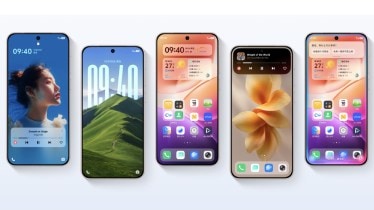When Apple revealed the ‘Liquid Glass’ aesthetics for iOS 26 earlier this summer, tech enthusiasts around the world knew that it was only a matter of months before Android-based phone makers would ‘take inspiration’. The first of the lot to take inspiration from Apple’s design aesthetics is Vivo, one of China’s biggest phone makers that has a notable footprint in India. Vivo’s new Origin OS 6 celebrates the trendy translucent glass-like effects, possibly more than Apple did in the actual update!
Apple’s latest design philosophy seems to be already influencing its biggest competitors in the mobile market. Promotional materials and demo videos for Vivo’s Origin OS 6 show an interface that could easily be mistaken for Apple’s iOS 26. From glass-like refraction effects to other UI elements, iPhone users on iOS 26 will be a lot more familiar with the aesthetics that Vivo has chosen. Good or bad? That’s for you to decide.
Key similarities between Vivo’s OriginOS 6 and iOS 26
“Liquid Glass” aesthetic:
The core visual identity of OriginOS 6 features the same rounded buttons and highly translucent, glass-like look that defines the new iOS.
Translucent elements:
This includes glass-like rounded buttons, translucent notifications, and translucent app folders and docks.
Iconography and Widgets:
The Vivo interface showcases squircle icons and a Liquid Glass clock, along with a Control Center that mirrors Apple’s design changes.
Spatial effects:
Vivo’s OriginOS 6 also incorporates wallpapers that shift with a two-dimensional to three-dimensional effect, similar to Apple’s new Spatial Scenes.
While the influence is clear, Vivo’s marketing for OriginOS 6 references water when describing the operating system’s performance. The marketing copy reads, “With OriginOS 6, every swipe, scroll, and tap flows like never before. No lags. No stutters. Just effortless motion built for the way you move.”
We wonder why Vivo didn’t side with Google’s Material 3 Expressive design theme, which is used beautifully on Google’s version of Android 16, for the new Origin OS, and instead chose to follow Apple’s way!
Will more Android phones be ‘inspired’ by Apple’s glass aesthetics?
For years, the design influences between Apple’s iOS and Google’s Android — and their respective hardware partners — have flowed back and forth. However, the pace at which Vivo has incorporated the ‘Liquid Glass’ design signals a greater impact of Apple’s latest aesthetic refresh.
The adoption of this transparent and liquid-like visual style confirms that the ‘Liquid Glass’ could soon become a design norm for other Android-based manufacturers to implement. With Vivo already on the hype train, it remains to be seen how other brands like OnePlus, Xiaomi, Oppo, and Motorola respond with future designs of their Android skins. All eyes are on Samsung, however, for its next year’s One UI 9 interface, expected to incorporate more glass-like elements in the interface than others.
